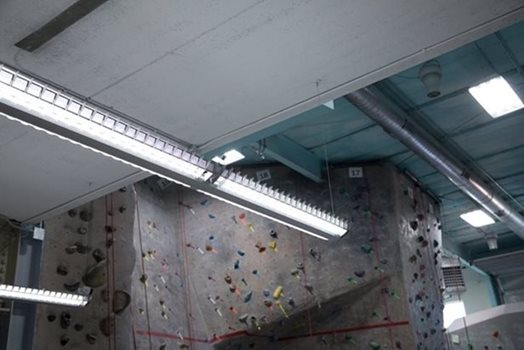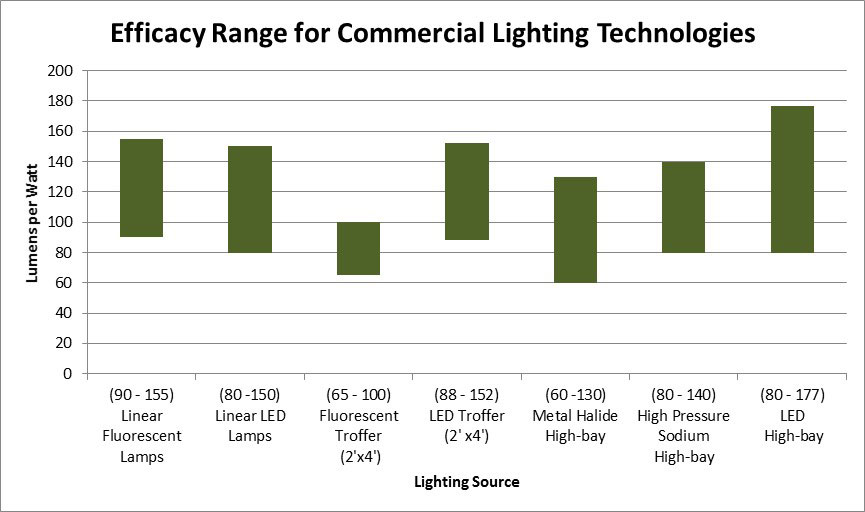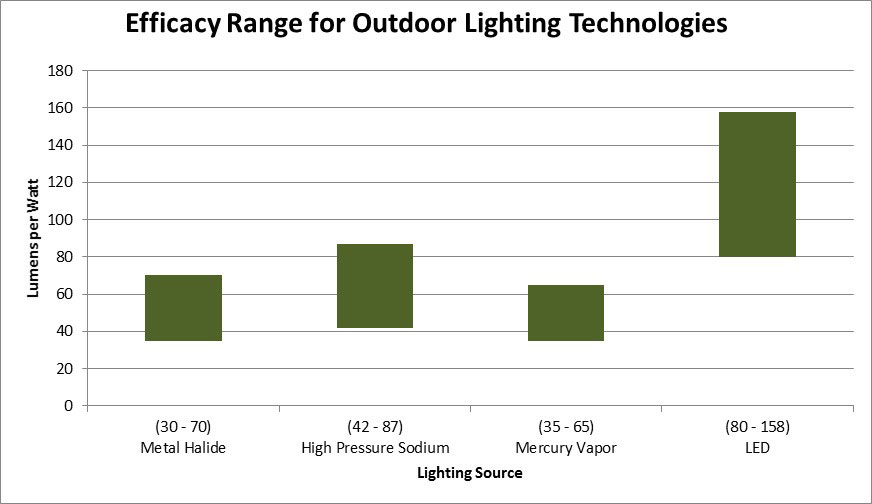LED Lighting Considerations

Quality light-emitting diode (LED) bulbs last longer, are more energy efficient and may be a good option if you are planning to replace the lighting at your business. Here are some tips to consider:
- Since new companies and products enter the market all the time, look for established manufacturers and ensure the lighting system (lamps, drivers and power supplies) has UL and FCC ratings.
- Before purchasing LEDs, review the efficacy (lumens per watt), color of the light (CCT degrees Kelvin), how the light affects the color of the items it illuminates (CRI 1-100) and if it is capable of dimming.
- Efficacy is the light output per energy input. A higher number is better. Efficacy is one key performance indicator to use when selecting lighting, but there are others to consider as well.
- The Corrected Color Temperature (CCT) describes the color "appearance" of the light. An incandescent lamp has a color temperature around 2,800 to 3,000 Kelvins. Natural daylight is around 6,400 Kelvins. Many people like the higher 4,000 to 5,000 Kelvins in a commercial office setting. Lamp manufacturers offer different color temperature choices for the same type of lamp. It is common to find the color temperature listed on the lamp packaging.
- The Color Rendering Index (CRI) is the ability of the light to show the natural color of an object. The range is 0 to 100. Look for a CRI of at least 85 for most applications; i.e., high-pressure sodium lighting provides a yellowish illumination but has a low CRI (around 25). This CRI value provides little ability to differentiate colors.
- It is best to avoid overly bright lights. Since a very small LED surface can produce a lot of light, glare bombs can be produced. A glare bomb is created if a high-intensity point source of light with a high CCT is mounted at or around eye height (8 to 12 feet) without diffusion. New LED technology often requires new fixture designs to prevent glare issues.
- There are millions of linear fluorescent tubes installed in fixtures around the world. A common upgrade is to use tubular LEDs to replace fluorescent tubes while using the same fixture. There are also many new LED lighting designs that do not use tubes.
- For tubular fluorescent systems, if the existing electronic ballast is less than three years old, there is a good chance it will work with some LED lamps. Review pricing on tubular systems and new fixtures and keep in mind that new LED products will have longer life spans.
- Typical life spans of common lamps are:
- Incandescent: 750 to 1,000 hours
- Halogen: 2,000 to 3,000 hours
- Metal Halide: 7,500 to 10,000 hours
- Fluorescent: 15,000 to 20,000 hours
- Mercury Vapor: 16,000 to 24,000 hours
- High-Pressure Sodium: 15,000 to 25,000 hours
- High-Power LEDs: 35,000 to 100,000 hours
- If you have a new building or a large number of fixtures that could be converted to LEDs, consider contacting a lighting designer. The lighting industry is becoming increasingly complex and is seeing a large introduction of new products. An experienced designer can help select the best light and controls system for each application. If working with lighting experts isn't an option, it is recommended that you check out online reviews and test lamps.
- For specialty spaces such as restaurants or galleries or for decorative lighting, there are additional parameters to consider. For example, some LEDs will change the CCT as they dim. It may be helpful to preview the specific lamp to understand this feature. Though an LED lamp or lighting system may be rated for dimming, some dim better than others. The dimming range may be only down to 50% of the light output or the light may dim but start to flicker at some output level.
The following two charts provide comparative efficacy data for commercial and outdoor lighting.

 Charts courtesy of E Source 2017
Charts courtesy of E Source 2017